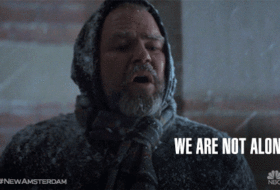Think back to the first time you were a leader.
Perhaps it was in 3rd grade PE class, and Mr. Kowolsky picked you, the quiet kid, to be team captain for the kickball game. What awesome power for eight-year-old you – you were calling all the shots; like if your team wanted to be up first, the kicking order, field positions, AND you got to pick who was going to be on your team, thereby avoiding being the dreaded last to be picked. Do you remember how you felt? Were you ready to puke or take it all on?
Fast forward a few years later to when you were in your first “real” job and started at the bottom. Managers saw your potential, gave you special projects, encouraged, and perhaps course corrected your actions, along the way. Soon, you were promoted to Team Lead, Supervisor, and eventually Manager! With each title, change came more responsibility, more life experiences, and more rewards. But could you do it alone? Of course not, you had to surround yourself with others who were capable. As we grow as human beings, so too (hopefully) are we growing as leaders.
As we know, leadership isn’t a solo sport, but a team sport. It’s not our job to do everything as a leader, but it is our job to make sure everything gets done. We need other members to make progress, and a good leader is one who, according to Simon Sinek, is “choosing to look out for the person on your left and to look out for the person on your right.”
Today is a great day to ask yourself a few questions:
– Am I channeling my inner Mr. Kowolsky and picking the quiet team member to be a captain once in a while, or do I pick the most vocal team members? Everyone deserves the chance to try.
– Am I developing others who the team has consciously or unconsciously elected to be their peer leader?
– Am I giving special projects, encouragement, and having the tough conversations with my direct reports so they can be the best leaders they can be, or am I afraid to offend them and therefore withhold opportunities?
Remember, what got us here won’t get us there (Marshall Goldsmith).We need to invest in ourselves as well as our teams for growth.
If leadership is a journey, not a destination, then Forbes.com has 5 Things to Pack for the Road:
- Travel light: It is inevitable that people will hurt and disappoint us on our journey of leadership. We need to decide not to carry the weight of unforgiveness, malice, vengeance, or anything that can entangle and slow us down. We can’t afford to drag the past along with us. Let it go. What stories are we telling ourselves that do not serve our interests? What beliefs do we need to let go of to become the leader we want to be?
- Define and articulate our leadership philosophy: Our leadership philosophy is our invitation to the types of leaders that will successfully translate our vision into reality. Without a well-articulated leadership philosophy, we will become everything to everybody—a recipe for mediocrity. What is our mission? Is it aligned with our core values? Are we pursuing something that gives our life meaning? Defining our leadership philosophy is the beginning of our leadership journey.
- Count the cost: Becoming a leader has a cost. We have to put our people first—admit our mistakes, take responsibility when things go wrong, sacrifice our agenda, and let go of people who refuse to grow so that the team can succeed. What are we willing to give up to become the leader we want to be? Understanding the cost of leadership will increase your resiliency and spare you frustrations down the road.
- Check your passenger list: Great leaders never walk alone. They understand that a one-person show is not scalable. Instead, great leaders are intentional and selective in surrounding themselves with seven people who add and create value. The bottom line: leadership is a team sport. The Leadership journey is like a marathon, and our co-passengers will influence whether we enjoy or endure our journey. We can’t be a successful leader if we don’t have a successor. We won’t have a successor if we do not intentionally build relationships and invest in the next-level leaders.
- Begin with the end in mind: Mediocre leaders use busyness as an excuse not to pause and reflect on their journey. They miss out on opportunities to transform their learnings into valuable insights that accelerate their growth and development. This won’t surprise anyone who follows us or has taken our classes: How do you measure success? Are you measuring what matters? People respect what we inspect, so the future of our organization depends on what we are measuring.
Our leadership journey started long ago. Our leadership journey is about the journey itself, not the destination. The road trip is a lot more fun with a car full of others with the same vision and mission… Enjoy the ride!




